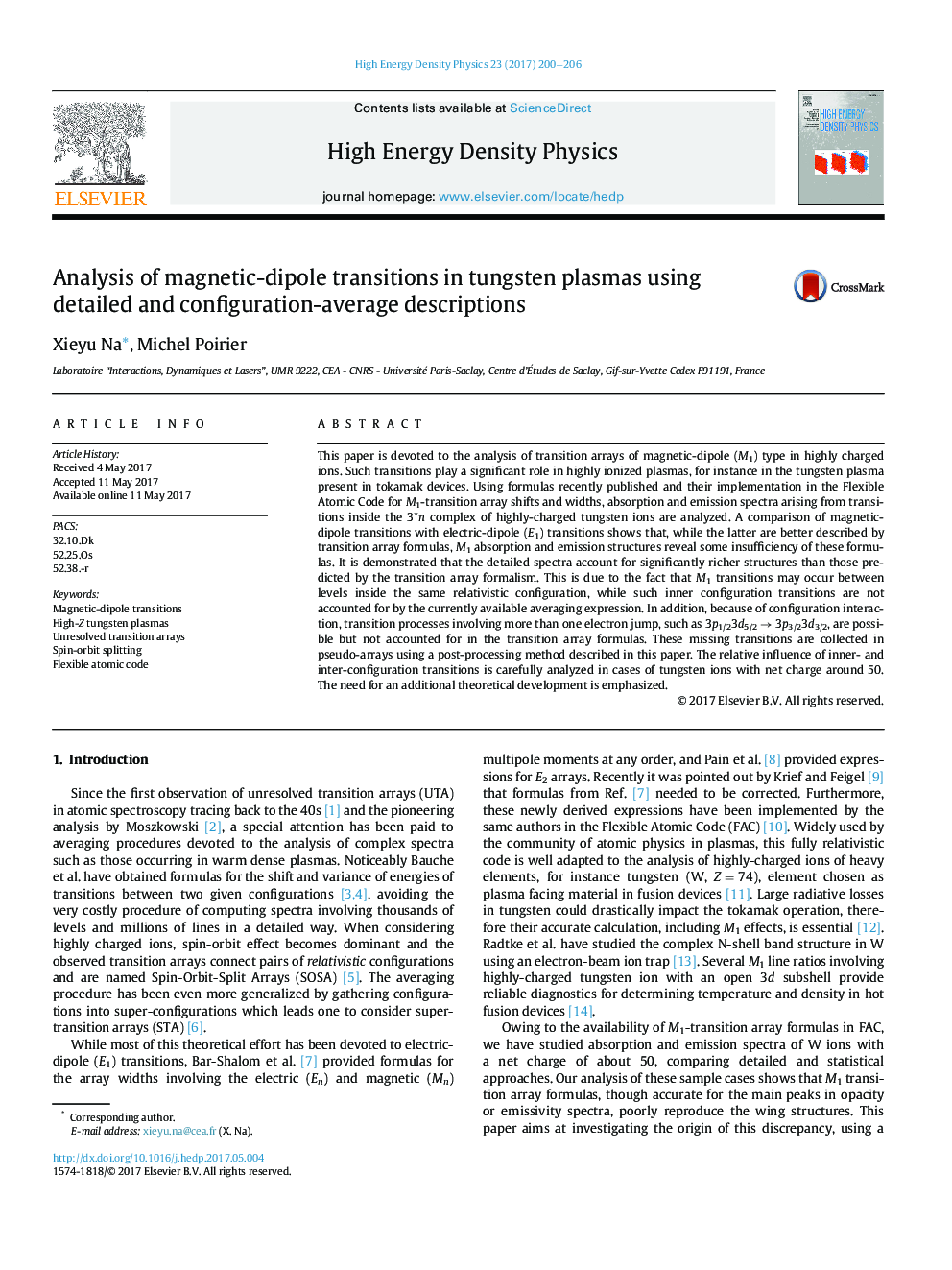| Article ID | Journal | Published Year | Pages | File Type |
|---|---|---|---|---|
| 5486923 | High Energy Density Physics | 2017 | 7 Pages |
Abstract
This paper is devoted to the analysis of transition arrays of magnetic-dipole (M1) type in highly charged ions. Such transitions play a significant role in highly ionized plasmas, for instance in the tungsten plasma present in tokamak devices. Using formulas recently published and their implementation in the Flexible Atomic Code for M1-transition array shifts and widths, absorption and emission spectra arising from transitions inside the 3*n complex of highly-charged tungsten ions are analyzed. A comparison of magnetic-dipole transitions with electric-dipole (E1) transitions shows that, while the latter are better described by transition array formulas, M1 absorption and emission structures reveal some insufficiency of these formulas. It is demonstrated that the detailed spectra account for significantly richer structures than those predicted by the transition array formalism. This is due to the fact that M1 transitions may occur between levels inside the same relativistic configuration, while such inner configuration transitions are not accounted for by the currently available averaging expression. In addition, because of configuration interaction, transition processes involving more than one electron jump, such as 3p1/23d5/2 â 3p3/23d3/2, are possible but not accounted for in the transition array formulas. These missing transitions are collected in pseudo-arrays using a post-processing method described in this paper. The relative influence of inner- and inter-configuration transitions is carefully analyzed in cases of tungsten ions with net charge around 50. The need for an additional theoretical development is emphasized.
Related Topics
Physical Sciences and Engineering
Physics and Astronomy
Astronomy and Astrophysics
Authors
Xieyu Na, Michel Poirier,
